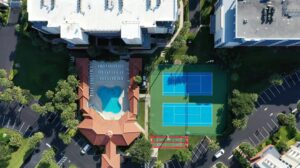Marketing your home through photography is transforming real estate listings into compelling narratives that attract prospective home buyers. Real estate photography, a critical facet of commercial photography, vividly showcases properties to captivate the target customers. This strategic marketing approach, enriched by photo editing, virtual tours, and virtual staging, amplifies visibility and engagement with home listings.
Choosing the right real estate photographer becomes paramount, as their expertise in photo composition and understanding of realtor photo ideas can significantly influence a property’s appeal. Preparing your property for a photography session, including getting the house ready for estate agent photos, ensures that the real estate marketing photos strike a chord with potential buyers, making property photos a powerful tool in the arsenal of real estate marketing tips.

Why High-Quality Real Estate Photography is Essential
High-quality real estate photography is not just about taking pictures; it’s about crafting a narrative that resonates with potential buyers. Here’s why it’s essential:
- Faster Sales and Higher Prices:
- Listings with aerial images sell 68% faster than those with standard photos.
- Professional photos lead to faster sales and a higher sale price.
- On average, homes with professional photos sell 50% faster and for $15,000 more.
- Increased Engagement:
- Professional photos generate 40% more leads.
- High-quality visuals make a strong first impression, crucial in a competitive market.
- Showcasing Property Potential:
- Professional photography highlights a property’s unique features, making it stand out.
- Techniques like adjusting lighting and using different angles capture every detail.
- Virtual staging services can enhance a property’s online presence, showcasing its potential.
These points underscore the value of investing in professional real estate photography to not only attract more potential buyers but also to achieve better outcomes in the real estate market.

Types of Real Estate Photography Services
Real estate photography services cater to a wide array of needs, ensuring that every aspect of a property is showcased to its best advantage. Here’s a breakdown of the types of services available:
- Standard Real Estate Photography: This service is the backbone of the industry, typically offering 20-30 professionally edited images that highlight the design and flow of interior rooms and spaces. It’s essential for interior designers, home staging companies, architects, magazines, and high-end realtors, aiming to accurately show the quality of construction and functional design.
- Aerial and Drone Photography: Offering a bird’s eye view, this service provides a sense of a house’s location relative to its neighborhood. It’s especially effective for showcasing exterior property features and the surrounding area, making it a valuable tool for both commercial and residential listings. Aerial photography can be achieved through drones or elevated support systems, ensuring a comprehensive view free from obstructions like trees.
- Virtual Tours and 3D Services: Virtual tours hand control to prospective buyers, allowing them to move through the property at their own pace. Tools like Matterport and Zillow lead the market in creating immersive 3D tours that can be enhanced with Virtual Reality (VR) to highlight a property’s best features. This service is crucial for understanding a house’s layout and is particularly well-suited for luxury properties.
Tips for Preparing Your Property for a Photography Session
Preparing your property for a photography session is crucial to ensure your real estate listing stands out. Here are some essential steps to consider:
- Initial Preparations:
- Understand the agent’s preferences and goals.
- Turn on all light fixtures, pull up blinds, and hide items affecting marketability.
- Clean the property thoroughly, including vacuuming carpets and polishing floors.
- Declutter and depersonalize by removing personal photographs and items.
- Photography Day Setup:
- Use a shot list for efficient photo shoots.
- Choose the right time for soft shadows and warm tones.
- Interior shots: Shoot from waist height, adjusting for higher ceilings.
- Exterior shots: Get three composed shots at the front and two wide shots from each backyard corner.
- Final Touches:
- Ensure all rooms are ready: Make beds correctly, arrange decorative pillows, and organize open shelves.
- Address the exterior: Attend to landscaping, remove cars from the driveway, and tidy up outdoor areas.
- Maximize light by opening all window treatments and turning on all lights.
Following these steps will help present your property in the best light, appealing to potential buyers and enhancing your real estate marketing efforts.
Choosing the Right Real Estate Photographer

When selecting the right real estate photographer, several key factors must be considered to ensure your property is showcased in the best light possible. Here’s a comprehensive checklist to guide your choice:
- Technical Proficiency and Equipment:
- Stability and Distortion: Insist on a photographer who uses a tripod for stability and to correct perspective distortion.
- Lighting and Composition: A keen understanding of ambient light positioning and mixing color temperatures is crucial. Look for expertise in HDR photography for balanced exposures.
- Lens Selection: Ensure they choose the right lens, like wide-angle for interiors and tilt-shift to avoid converging lines.
- Professional Experience and Portfolio:
- Past Work and Style: Review their portfolio for consistency in color balance, sharpness, and a variety in property types.
- Real Estate Understanding: Preference should be given to photographers with a solid grasp of real estate marketing and the specific demands of residential, commercial, and architectural photography.
- Licensing and Additional Services: Verify their drone license for aerial shots and inquire about their turnaround time and flexibility.
- Business Acumen:
- Licensing Agreement and Policies: Clear understanding and written agreements on photo usage rights and knowledge of the photographer’s cancellation policies are essential.
- Cost vs. Value: Evaluate their pricing in relation to the quality of work and services offered, ensuring it aligns with market rates.
- Client Feedback: Seek client references or online testimonials to gauge satisfaction and professionalism.
Choosing a real estate photographer is more than just finding someone with a camera; it’s about finding a partner who can visually communicate the value of your property to potential buyers.




